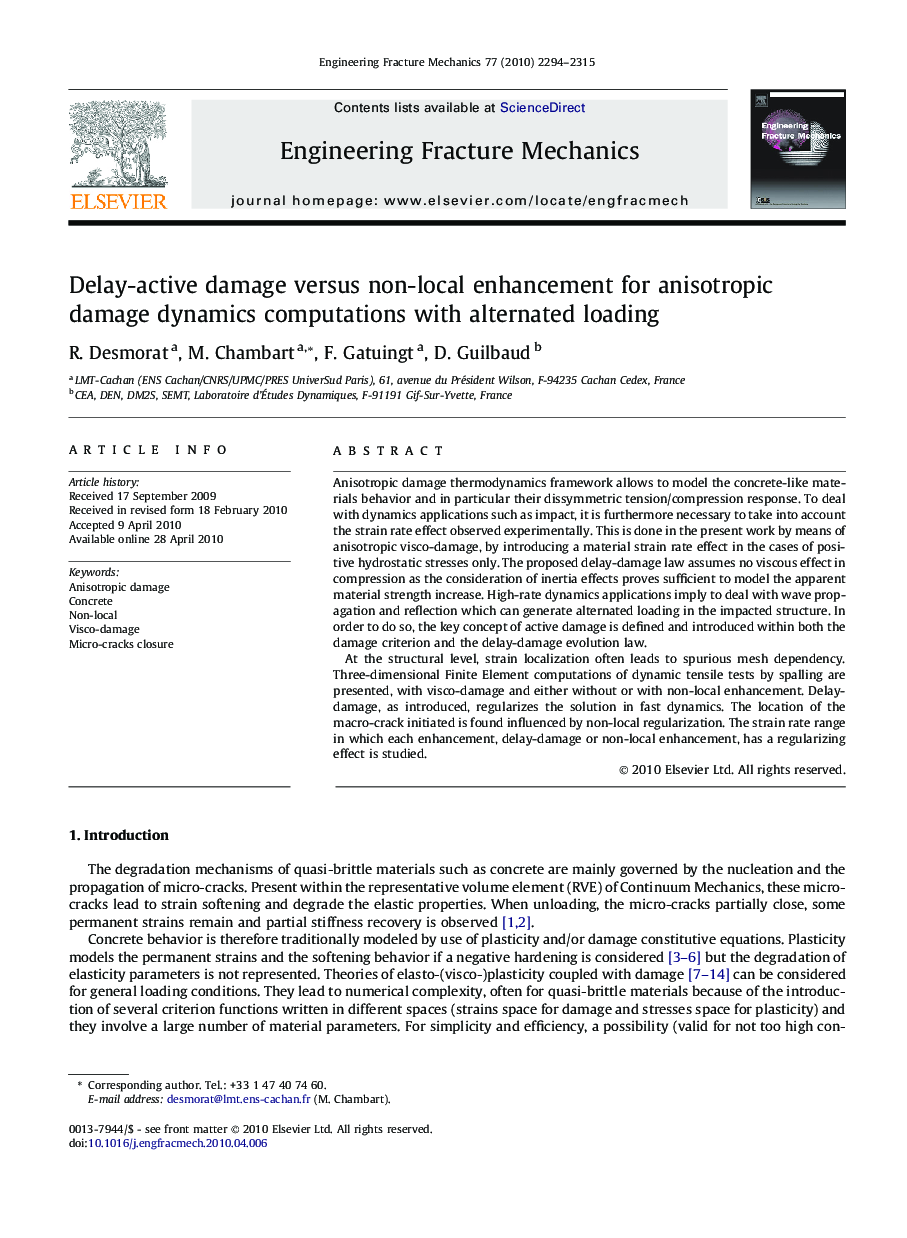| Article ID | Journal | Published Year | Pages | File Type |
|---|---|---|---|---|
| 767864 | Engineering Fracture Mechanics | 2010 | 22 Pages |
Anisotropic damage thermodynamics framework allows to model the concrete-like materials behavior and in particular their dissymmetric tension/compression response. To deal with dynamics applications such as impact, it is furthermore necessary to take into account the strain rate effect observed experimentally. This is done in the present work by means of anisotropic visco-damage, by introducing a material strain rate effect in the cases of positive hydrostatic stresses only. The proposed delay-damage law assumes no viscous effect in compression as the consideration of inertia effects proves sufficient to model the apparent material strength increase. High-rate dynamics applications imply to deal with wave propagation and reflection which can generate alternated loading in the impacted structure. In order to do so, the key concept of active damage is defined and introduced within both the damage criterion and the delay-damage evolution law.At the structural level, strain localization often leads to spurious mesh dependency. Three-dimensional Finite Element computations of dynamic tensile tests by spalling are presented, with visco-damage and either without or with non-local enhancement. Delay-damage, as introduced, regularizes the solution in fast dynamics. The location of the macro-crack initiated is found influenced by non-local regularization. The strain rate range in which each enhancement, delay-damage or non-local enhancement, has a regularizing effect is studied.
